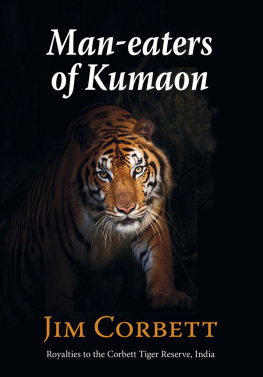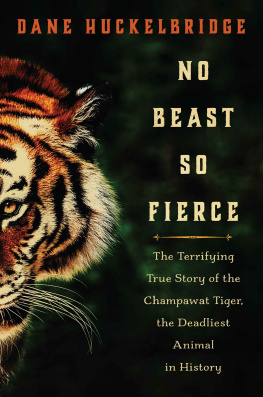
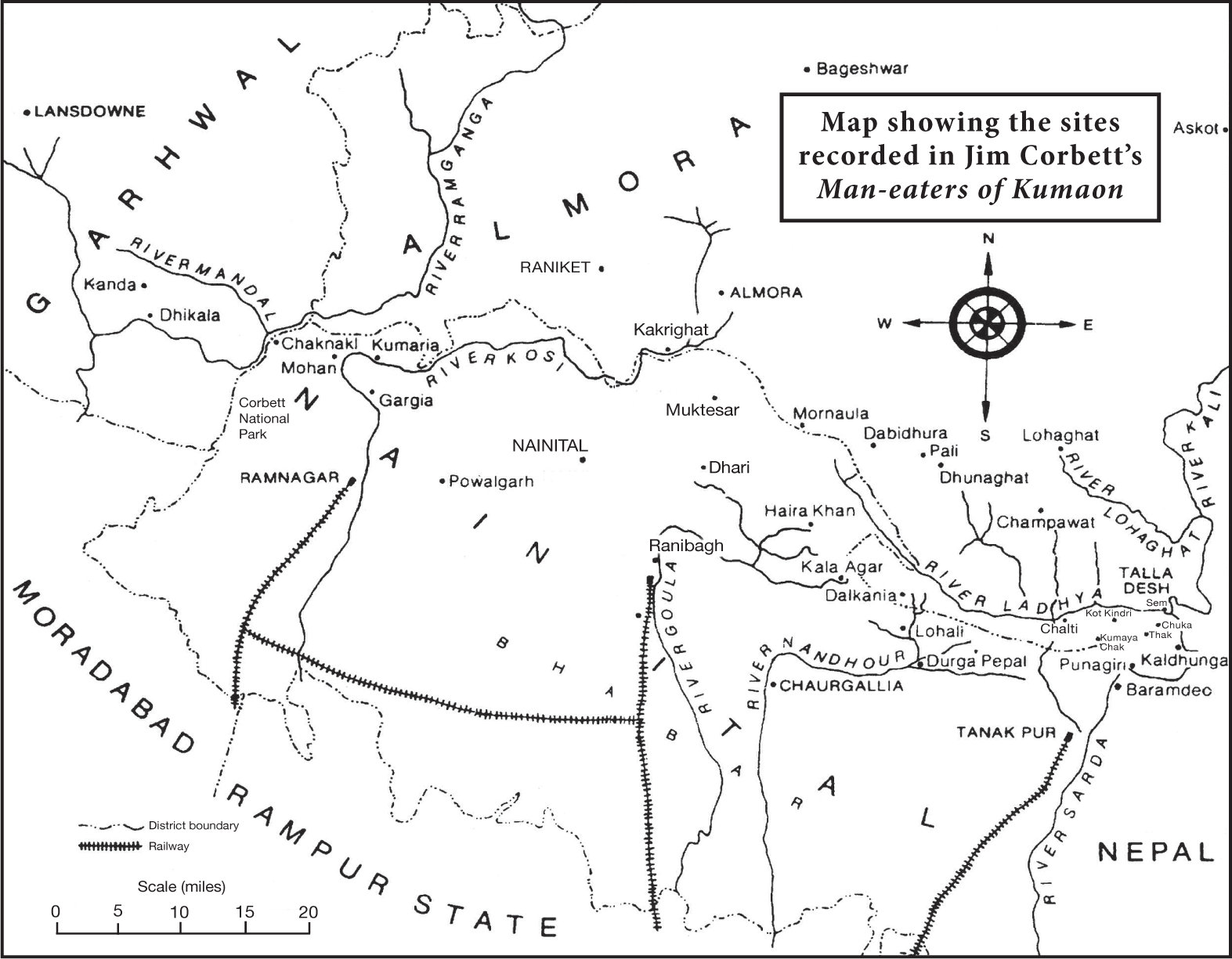
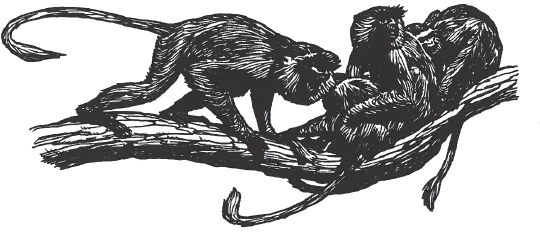
Contents
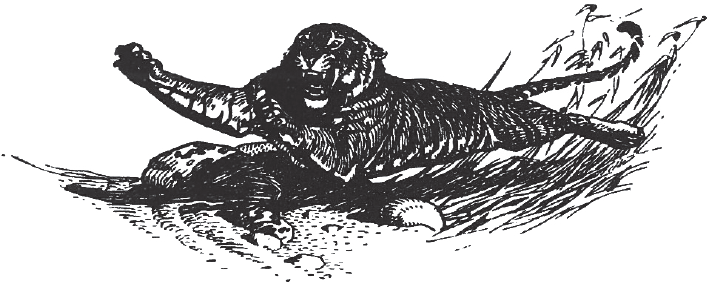
Authors Note
As many of the stories in this book are about man-eating tigers, it is perhaps desirable to explain why these animals develop man-eating tendencies.
A man-eating tiger is a tiger that has been compelled, through stress of circumstances beyond its control, to adopt a diet alien to it. The stress of circumstances is, in nine out of ten cases, wounds, and in the tenth case, old age. The wound that has caused a particular tiger to take to man-eating might be the result of a carelessly fired shot and failure to follow up and recover the wounded animal, or the result of the tiger having lost his temper when killing a porcupine. Human beings are not the natural prey of tigers, and it is only when tigers have been incapacitated through wounds or old age that, in order to live, they are compelled to take a diet of human flesh.
A tiger when killing its natural prey, which it does either by stalking or lying in wait for it, depends for the success of its attack on its speed and, to a lesser extent, on the condition of teeth and claws. When, therefore, a tiger is suffering from one or more painful wounds, or when its teeth are missing or defective and its claws worn down and it is unable to catch the animals it has been accustomed to eating, it is driven by necessity to killing human beings. The change-over from animal to human flesh is, I believe, in most cases accidental. As an illustration of what I mean by accidental I quote the cases of the Muktesar man-eating tigress.
This tigress, a comparatively young animal, in an encounter with a porcupine lost an eye and got some fifty quills, varying in length from one to nine inches, embedded in the arm and under the pad of her right foreleg. Several of these quills, after striking a bone, had doubled back in the form of a U, the point, and the broken-off end being quite close together. Suppurating sores formed where she endeavoured to extract the quills with her teeth, and while she was lying up in a thick patch of grass, starving and licking her wounds, a woman selected this particular patch of grass to cut as fodder for her cattle.
At first the tigress took no notice, but when the woman had cut the grass right up to where she was lying the tigress struck once, the blow crushing in the womans skull. Death was instantaneous, for, when found the following day, she was grasping her sickle with one hand and holding a tuft of grass, which she was about to cut when struck, with the other. Leaving the woman lying where she had fallen, the tigress limped off for a distance of over a mile and took refuge in a little hollow under a fallen tree. Two days later a man came to chip firewood off this fallen tree, and the tigress, who was lying on the far side, killed him. The man fell across the tree, and as he had removed his coat and shirt and the tigress had clawed his back when killing him, it is possible that the smell of the blood trickling down his body as he hung across the bole of the tree, first gave the idea that he was something that she could satisfy her hunger with. However that may be, before leaving him she ate a small portion from his back. A day after she killed her third victim deliberately and without having received any provocation. Thereafter she became an established man-eater and killed twenty-four people before she was finally accounted for.
A tiger on a fresh kill, or a wounded tiger, or a tigress with small cubs, will occasionally kill human beings who disturb them; but these tigers cannot, by any stretch of imagination, be called man-eaters though they are often so called. Personally I would give a tiger the benefit of the doubt once, and once again, before classing it as a man-eater, and whenever possible I would subject the alleged victim to a post-mortem before letting the kill go down on the records as the kill of a tiger or a leopard, as the case might be. This subject of post-mortems of human beings alleged to have been killed by either tigers or leopards or, in the plains, by wolves or hyenas, is of great importance, for, though I refrain from giving instances, I know of cases where deaths have wrongly been ascribed to carnivora.
It is a popular fallacy that all man-eaters are old and mangy, the mange being attributed to the excess of salt in human flesh. I am not competent to give any opinion on the relative quantity of salt in human or animal flesh; but I can, and I do, assert that a diet of human flesh, so far from having an injurious effect on the coat of the man-eaters, has quite the opposite effect, for all the man-eaters I have seen have had remarkably fine coats.
Another popular belief in connection with man-eaters is that the cubs of these animals automatically become man-eaters. This is quite a reasonable supposition; but it is not borne out by actual facts, and the reason why the cubs of man-eaters do not themselves become man-eaters, is that human beings are not the natural prey of tigers, or of leopards.
A cub will eat whatever its mother provides, and I have even known of tiger cubs assisting their mothers to kill human beings: but I do not know of a single instance of a cub, after it had left the protection of its parent, or after that parent had been killed, taking to killing human beings.
In the case of human beings killed by carnivora, the doubt is often expressed as to whether the animal responsible for the kill is the tiger or leopard. As a general rule to which I have seen no exceptions tigers are responsible for all kills that take place in daylight, and leopards are responsible for all kills that take place in the dark. Both animals are semi-nocturnal forest-dwellers, have much the same habits, employ similar methods of killing, and both are capable of carrying their human victims for long distances. It would be natural, therefore, to expect them to hunt at the same hours; and that they do not do so is due to the difference in courage of the two animals. When a tiger becomes a man-eater it loses all fear of human beings and, as human beings move about more freely in the day than they do at night, it is able to secure its victims during daylight hours and there is no necessity for it to visit their habitations at night. A leopard, on the other hand, even after it has killed scores of human beings, never loses its fear of man; and, as it is unwilling to face human beings in daylight, it secures its victims when they are moving about at night or by breaking into their houses at night. Owing to these characteristics of the two animals, namely; that one loses its fear of human beings and kills in the daylight, while the other retains its fear and kills in the dark, man-eating tigers are easier to shoot than man-eating leopards.
The frequency with which a man-eating tiger kills depends on (a) the supply of natural food in the area in which it is operating; (b) the nature of the disability which has caused it to become a man-eater, and (c) whether it is a male or female with cubs.
Those of us who lack the opportunity of forming our own opinions on any particular subject are apt to accept the opinions of others, and in no case is this more apparent than in the case of tigers here I do not refer to man-eaters in particular, but to tigers in general. The author who first used the words as cruel as a tiger and as bloodthirsty as a tiger when attempting to emphasise the evil character of the villain of his piece, not only showed a lamentable ignorance of the animal he defamed, but coined phrases which have come into universal circulation, and which are mainly responsible for the wrong opinion of the tigers held by all except that very small proportion of the public who have the opportunity of forming their own opinions.
Next page
